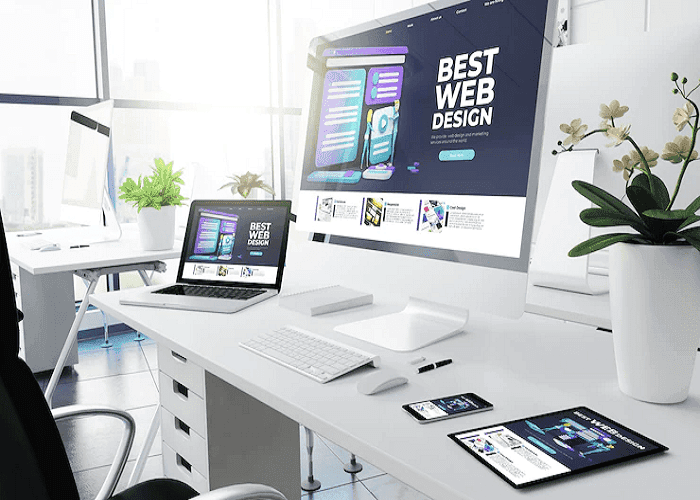The 7 Website Design dos and don’ts
WEBSITE DESIGN DO’S AND DON’TS
If you create websites, you are aware that your top priority is to make your designs fun and useful. For those who have only recently begun developing websites, even with the best website design software at their disposal, it may be a daunting undertaking. To make it easier, I’ve put up a short list of dos and don’ts to bear in mind when designing your next web design project.

First, the dos:
1. Maintain a Consistent Interface
Consistency in interface design across the board in a product is one of the pillars of strong UX. All of the pages on your website should have the same general layout and style. Navigation, color palettes, typefaces, and design consistency writing can have a positive impact on usability and UX.
2. Create Simple Navigation
The usability foundation is navigation. It is the primary method of engagement on the Internet. In order to make sure that visitors can find what they’re looking for, a website must have good navigation.
Practical Advice:
I. Save the primary navigation options for top-level navigation Alone. Because the average human can only hold seven items in working memory, keep your top-level navigation links to a maximum of seven options. Instead, develop sub-navigation with distinct categories.
II. Label the navigation options with distinct Names. To make menu items easier for customers to understand, use common terminology.
III. Reduce the time it takes users to reach their Destination. Create your navigation so that it takes the fewest amount of clicks to take people where they want to go. The three-click rule, which states that your readers should never be more than three clicks away from what they are looking for, should be kept in mind when building a website.
IV. Incorporate navigation choices into your website’s Footer. Visitors anticipate finding navigation choices and contact details in the footer.
3. Modify the links’ Visited State’s Color
In the navigation process, links are crucial. Users may unintentionally revisit the same pages if visited links don’t change color. Knowing where you’ve been and where you now make it simpler to decide where to go next.
4. Create pages that are Simple to Scan
Users are more likely to quickly skim a page on your website than to read it from top to bottom. For instance, when users are trying to find certain information or finish a task, they will browse a website’s pages until they find it. By creating a strong visual hierarchy, you, as a designer, can assist them with this. The arrangement or display of items in a way that suggests hierarchy is known as a visual hierarchy.
Practical advice:
I. Avoid reading long passages of text. Put your material into groups so that it would be simpler to understand visually. creating breaks in long text blocks using headers or bullet points.
II. Give crucial components additional Visual weight. Include critical components such as call-to-action buttons or login forms as focal points so visitors visit them immediately. By employing varied sizes or colors, you may draw attention to certain elements.
5. Treat content with Respect
Your website’s copy is equally as crucial as its design. The majority of information on the internet (more than 95%) is textual. A good website has both outstanding design and amazing content; even if your site is brilliantly designed, it will be nothing more than an empty frame without it. A designer’s responsibility is to make sure the design supports and enhances the content.
Practical Advice:
I. Make sure the website’s text is Pertinent. The relevant text adds nothing to your visitors’ experience and could possibly confuse them. Strive to write copy so that each line of text is beneficial to your visitors.
II. Don’t use jargon. For ease of understanding, the text on your website should be as straightforward and concise as feasible. Writing for all reading abilities by using terms that are transparent and simple to understand for everyone is a safe bet.
6. Verify your Webpage for Mistakes

A minor mistake can quickly ruin a magnificent piece of art. Here are some typical issues to be aware of:
I. Beware of broken links. When a consumer clicks a link on a website and is met with a 404 error page, it might be easy for them to lose patience.
II. Look for errors on your website.
III. Verify that all media content is loading properly with no broken videos or photos.
7. Reduce the Number of Options
People’s decisions are influenced by the number of options they have; the more options they have, the less action is taken. Your user will have to ponder too much if you give them too many options. It’s preferable to limit the options to enhance the likelihood of engagement.
Then, they Do not
1. Avoid making users wait while content Loads
For the user experience, loading speed is crucial. Today, 47% of consumers expect a web page to load in two seconds or less as technology advances and our impatience grows. Visitors could get impatient and leave a website if a web page loads slowly. Because of this, a web should prioritize speed applications.
Practical Advice:
I. Try to avoid loading any blank pages. Consider displaying a portion of the material along with some type of visual feedback, such as a loading indicator, when loading takes some time.
II. Enhance the images. It can take a while for photographs, especially large background images, to load. By optimizing your photographs, the loading time can be reduced dramatically.
III. Analyze the current Performance of your website. The tools provided by Google, Page Speed Insights and Think With Google, not only assist you in locating performance issues with your website but also suggest fixes for some of them.
2. Avoid creating new tabs for Internal Links
Internal and external links should behave differently, according to users. You should have all internal links open in the same tab to give consumers the ability to hit the “back” key. If you choose to do so, you should give users a heads-up before launching a new tab or window whenever they click an external link. This might be done by including the phrase “opens in a new window” in the link text.
3. Limit the Number of fonts you Utilize
It’s usually tempting to utilize numerous typefaces when creating a web design—five or six different fonts, maybe even your own. But it’s preferable to resist that urge. Too many font type variants can be distracting, perplexing, and possibly even irritating.

Using a maximum of three different typefaces in a maximum of three different sizes is popular advice. When creating a web design, consider Play with weight to increase the typography’s impact rather than using different fonts.
4. Avoid overusing colors on your Website
It’s advisable to stay away from utilizing too many colors in the design, much like with typefaces. Balance is important when applying color to a design, and the more colors you use, the more challenging it is to achieve balance. If you try to transmit a million emotions and messages at once using too many colors in your design, the viewer may become perplexed. Unless you wish to use color to highlight a certain section that is very essential, it is always preferable to confine the color scheme to a few hues and maintain consistency throughout your site.
Practical advice:
Consider the feelings you wish to arouse in your Visitors. Choosing the right color scheme can be aided by being aware of the emotions you want to communicate. For instance, you wouldn’t want a loud and vibrant color scheme if your website promoted meditation items.
5. Avoid Displaying Automatic pop-ups too Soon
Many websites prompt you to subscribe as soon as you land on the page via pop-up boxes. One of the most obnoxious things a designer can do to a website visitor is to display pop-up windows. Pop-ups by their very nature are intrusive, and since they are frequently employed to display advertisements, users frequently close them even before reading the information.
Practical tip:
Timing is key when using pop-ups. You must demonstrate your ability to provide value before requesting action from visitors. Stop the box from appearing until visitors have read the entire page or have spent some time on the website.
6. Avoid using Stock images of Individuals
Human face images are an extremely powerful tool for engaging your audience. Faces naturally draw the attention of our brains. We feel more connected to other people and less like we are merely utilizing a product when we can see their faces.

However, a lot of business websites are infamous for their excessive usage of manufactured imagery used to “create trust”. Usability testing reveals that solely ornamental photographs rarely add value to the web design and often harm the user experience.
7. Don’t let promotion ruin the Performance
Too many advertisements or promotions on a page can quickly overwhelm the primary content and make it more difficult for consumers to complete activities. If you place too many adverts on a page, they will all compete for readers’ attention. The sensory overload that this causes will ultimately raise your bounce rates. It’s also crucial to recognize that people typically overlook anything that resembles an advertisement; this condition is known as “banner blindness.”


